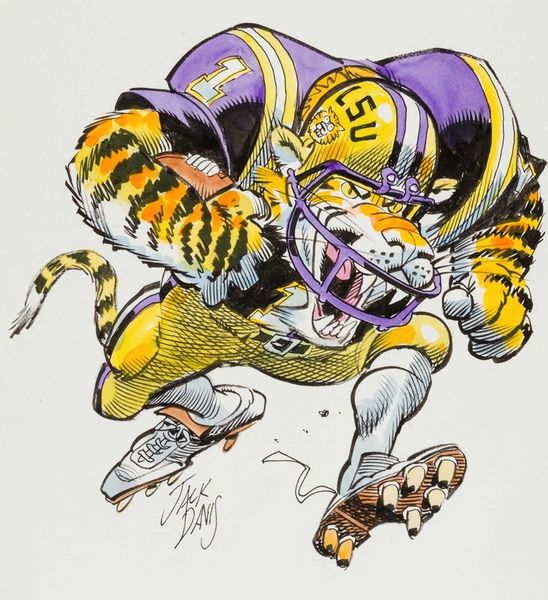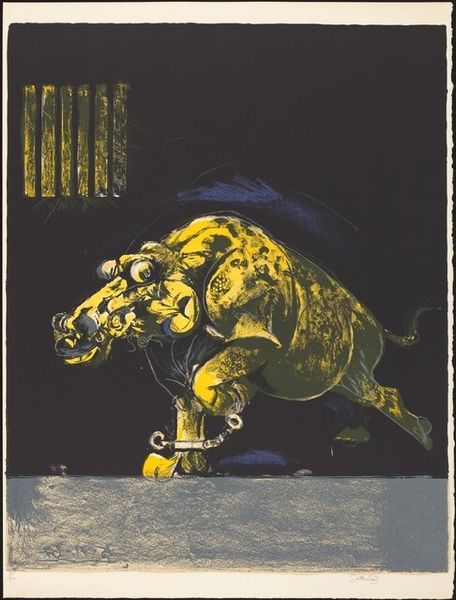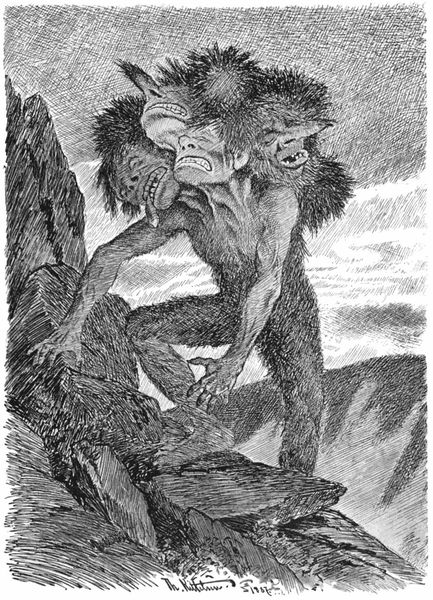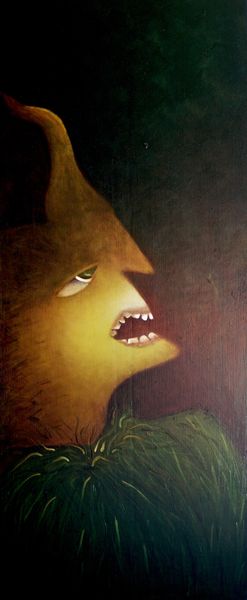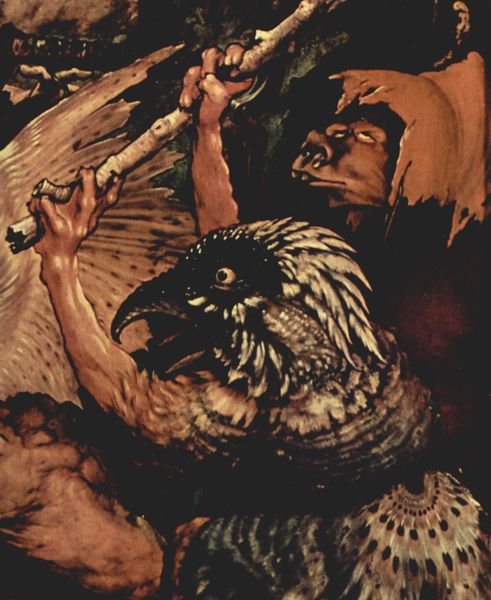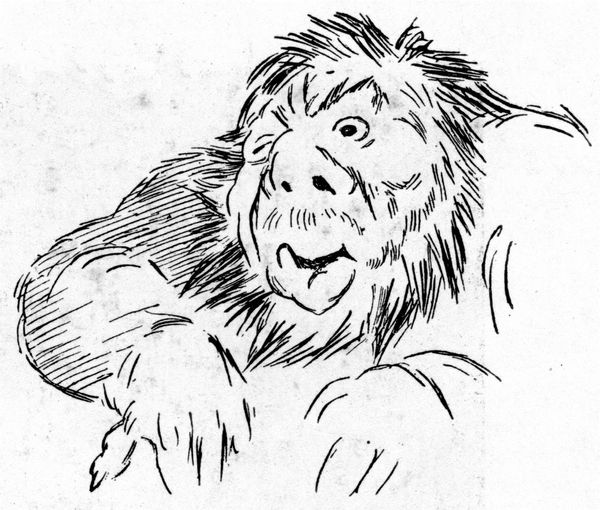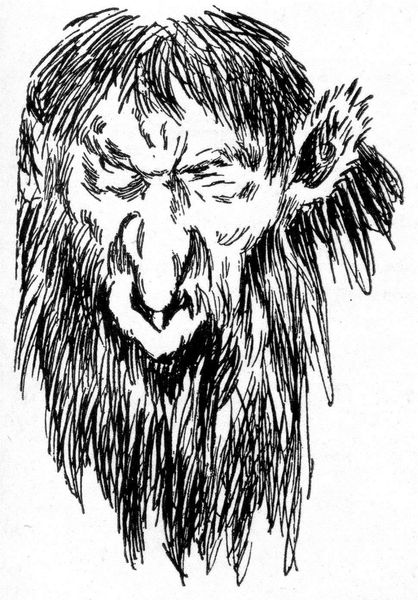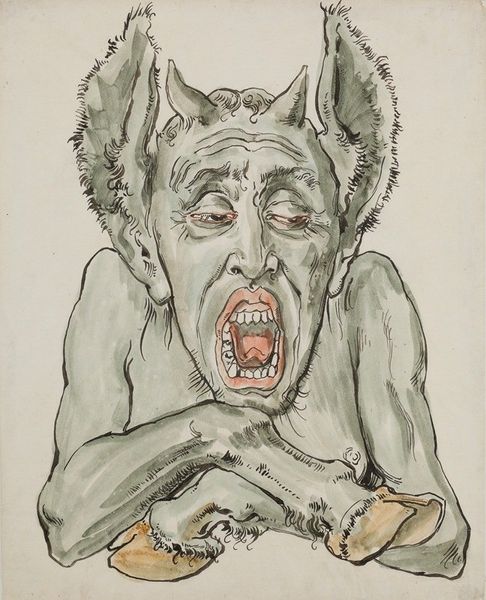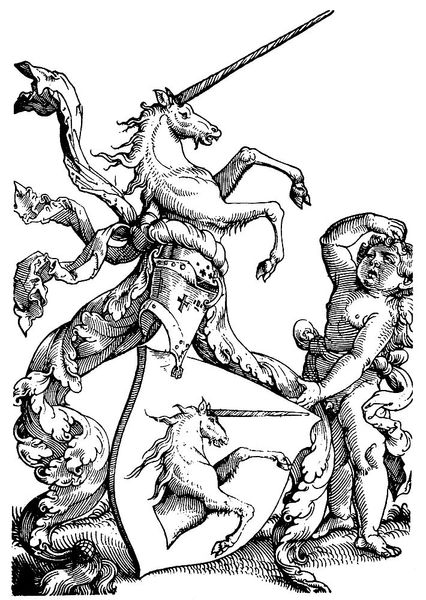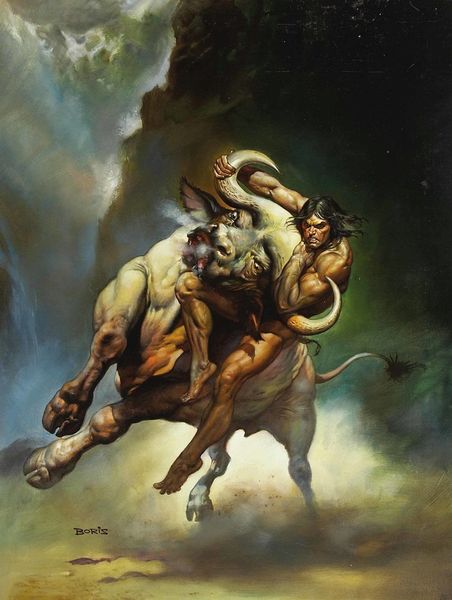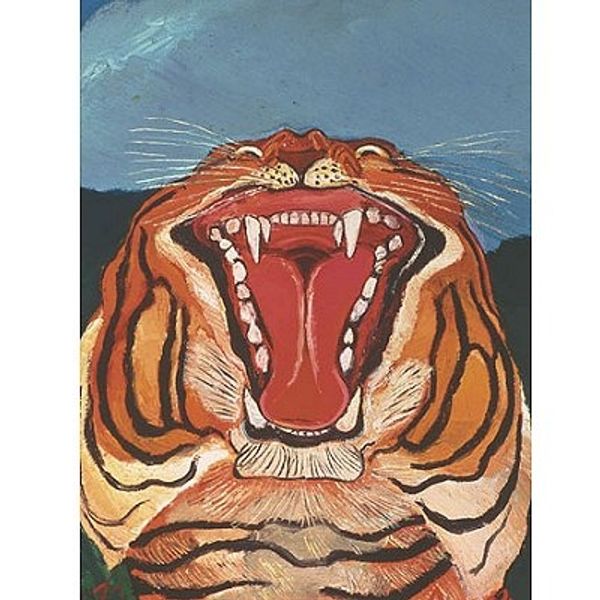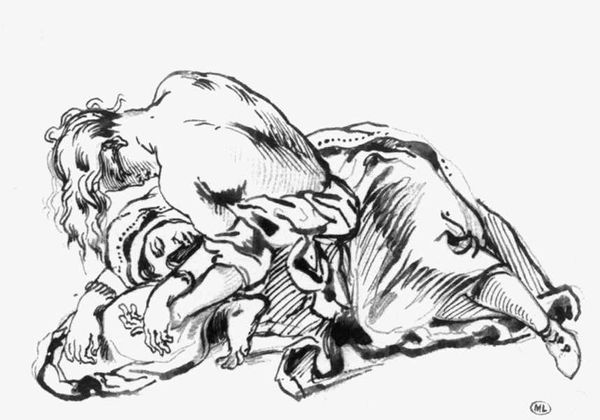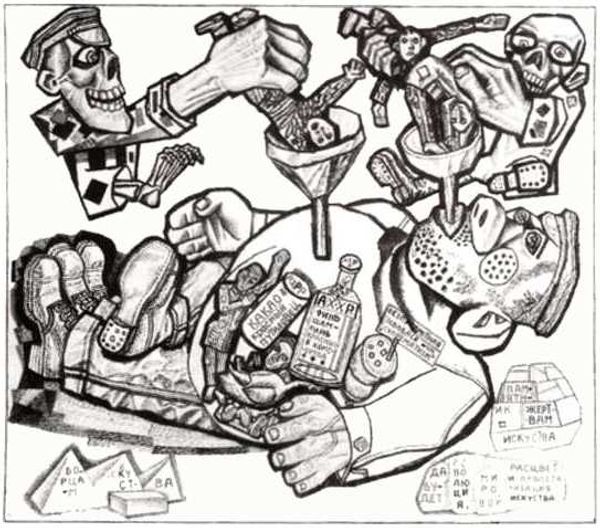
drawing, ink, pencil
#
drawing
#
contemporary
#
caricature
#
caricature
#
figuration
#
ink
#
pencil
#
cartoon style
Copyright: Modern Artists: Artvee
Curator: This is Jack Davis's "Arizona Wildcats College Football," a drawing likely created in the 1990s using ink and pencil. It's quite striking. What are your initial thoughts? Editor: Visually, it's aggressively energetic. The wildcat bursts forward, claws extended, embodying raw power. The exaggerated features suggest cartoon aesthetics. Curator: Precisely. Note the strategic use of line. Cross-hatching dominates the figure, lending texture and volume. Observe how the density of these lines dictates areas of shadow, intensifying the wildcat's ferocity. Do you see how it creates form? Editor: Yes, the cross-hatching gives it an almost woodcut feel. Given Davis's background, it reminds one of comic books – the pulp and production processes inherently influenced his stylistic approach and mass distribution goals, which in turn affected perception of cartoon style. The economical use of line and color served the fast production cycle, informing artistic choices as much as individual creativity. Curator: Absolutely. Consider the semiotics at play. The wildcat, emblazoned with the "A," transcends simple representation. It functions as a signifier, deeply entrenched within the lexicon of collegiate sports and symbolic meaning within a framework that evokes power, loyalty, and competitiveness. It’s about cultural narrative through a specific iconography. Editor: I'd emphasize also that the image probably started as a commission. These images are meant for consumption. They rely heavily on brand association and reinforce economic narratives connected with collegiate sports – this colors everything about it. We can not detach the labor behind this to produce not only artwork but a type of commodity. Curator: A valid point. The commercial aspect undeniably shaped its aesthetic, but to fully comprehend, we cannot disregard formal design, its inherent visual vocabulary through contrast and proportion that dictates how viewers perceive it. The looming figure emerging beyond the flat picture plane commands attention in accordance with Gestalt’s organizational rules and structures! Editor: True, these visual strategies enhance immediate impact and mass distribution is the purpose of this drawing that connects to cultural contexts by promoting team identity as consumer products while this artistic style becomes immediately accessible when sold on posters or displayed through mass media networks like television which inevitably transforms meaning over time as consumption increases! Curator: So, the formal choices and the socioeconomic circumstances combine to make the drawing something complex. Editor: Precisely. The dialogue between art and the context surrounding it ultimately affects the meaning behind images, isn't it?
Comments
No comments
Be the first to comment and join the conversation on the ultimate creative platform.
